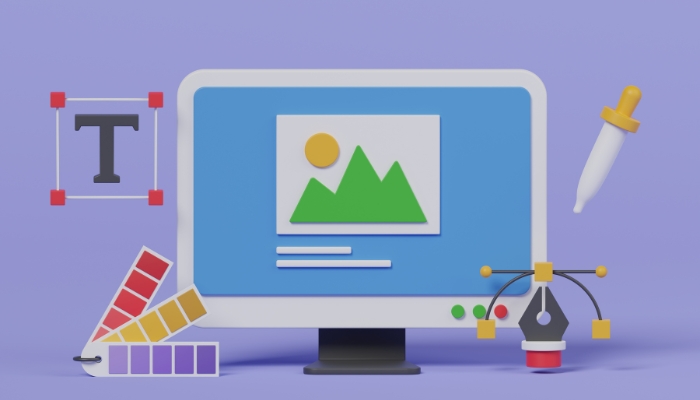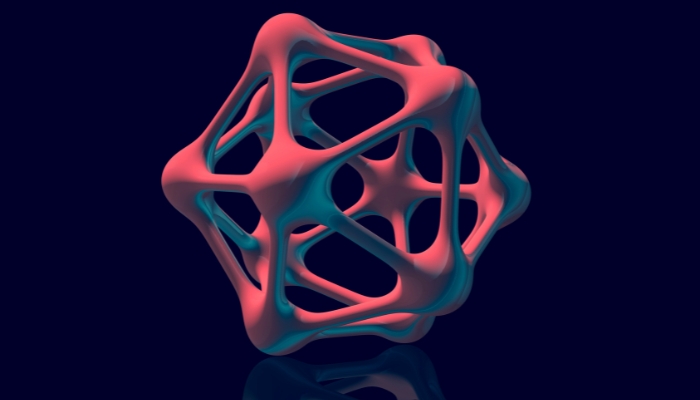Introduction:
2D and 3D logos are two types of logos that differ in their appearance and design approach.
2D logos are flat, two-dimensional designs that typically consist of text and/or simple graphics. They are best suited for businesses that want a clean and straightforward look, as well as those that need to reproduce their logo on various surfaces and materials. 2D logos can be easily reproduced in a variety of sizes and formats, making them an affordable option for businesses that need to use their logos across multiple platforms.
On the other hand, 3D logos are three-dimensional designs that add depth and dimension to a logo. They are often used to convey a sense of modernity, innovation, or sophistication. 3D logos are also effective at capturing attention and standing out in a crowded marketplace. However, they can be more complex to design, as well as more difficult to reproduce in certain mediums and sizes.

What are 2D and 3D Logo Designs?
2D and 3D logo designs are two distinct forms of visual representation that serve different purposes and convey different messages. A 2D logo is a flat, two-dimensional design that typically consists of text, symbols, and/or graphics. These logos are versatile, easily reproducible, and ideal for use in print materials, websites, and other digital media. They can be customized with different colors, font styles, and graphic elements, and are often designed to convey a sense of professionalism, stability, and timelessness.
On the other hand, 3D logos are three-dimensional designs that add depth and dimension to a logo. These logos are more visually engaging and can convey a sense of movement, dynamism, and innovation. 3D logos are often used by companies that want to create a unique and memorable brand identity, and can be especially effective in digital media, where they can be animated and interacted with. However, 3D logos can also be more complex and difficult to produce, and may not be as versatile as 2D logos in certain mediums and sizes.
The creative process for 2D and 3D logo design can differ greatly, with 2D logo design typically involving the creation of a flat, two-dimensional design that is easy to reproduce and customize. 3D logo design, on the other hand, involves adding depth and dimension to the design, which can require more advanced graphic design software and technical expertise.
In conclusion, choosing between a 2D and 3D logo depends on several factors, including your company’s brand image and values, your target audience, and the purpose and context in which the logo will be used. While 2D logos are versatile and ideal for use in a variety of media, 3D logos can convey a sense of movement and innovation and are ideal for companies that want to create a unique and memorable brand identity. Ultimately, the goal should be to choose a logo design that accurately represents your brand and effectively communicates your message to your target audience.
Advantages and Disadvantages of 2D Logo Design
2D logo design is a popular choice among businesses because of its versatility, affordability, and customization options. However, it also has some disadvantages that should be considered before choosing a 2D logo for your business.
Advantages of 2D logo design include:
- Versatility: 2D logos are flat and easily reproducible, making them ideal for use in a variety of mediums, such as print materials, websites, and digital media. They can be scaled to any size without losing quality, which is important for branding consistency across different mediums.
- Customization options: 2D logos are easy to customize, allowing businesses to make changes to the design as needed. This is important for businesses that want to keep their branding updated over time.
- Ability to convey a sense of professionalism and stability: 2D logos are often designed to look timeless and professional, making them ideal for businesses that want to convey a sense of stability and dependability to their target audience.
However, there are also some disadvantages to 2D logo design that should be considered:
- Lack of dimension and depth: 2D logos are flat and lack the depth and dimension that 3D logos offer. This can make them appear uninteresting and bland in comparison.
- Can appear flat and uninteresting: Without the added dimension and depth of a 3D logo, 2D logos can sometimes appear flat and uninteresting. This can be a disadvantage for businesses that want to create a memorable and engaging brand identity.
- Limited ability to convey a sense of modernity or innovation: 2D logos are often designed to look timeless and professional, but this can also limit their ability to convey a sense of modernity and innovation. For businesses that want to convey a cutting-edge image, a 3D logo may be a better option.

Advantages and Disadvantages of 3D Logo Design
3D logo design can provide a number of advantages, including increased visibility, versatility, and better representation of complex ideas. However, it can also have disadvantages such as higher cost, limited use, complexity, and reduced flexibility. Before choosing a 3D logo design, it is important to weigh the advantages and disadvantages and consider the specific needs and goals of your brand.
Advantages of 3D Logo Design:
- Increased Visibility: A 3D logo design is more eye-catching and stands out compared to a 2D logo. This makes it easier for consumers to remember your brand and recognize it in the future.
- mproved Versatility: A 3D logo design can be used in a variety of media, including print materials, websites, and even on products. This makes it more versatile than a 2D logo, which may not look as good in some contexts.
- Better Representation of Complex Ideas: 3D logos are ideal for representing complex ideas or concepts that are difficult to depict in a 2D design. For example, if you have a technology company that specializes in virtual reality, a 3D logo can help convey the concept better than a 2D design.
- Enhanced Branding: A well-designed 3D logo can provide a more professional and sophisticated image for your brand, giving it a competitive edge.
However, there are also some disadvantages to 3D logo design that should be considered:
- Higher Cost: 3D logo design can be more expensive than 2D design, due to the added complexity and specialized skills required to create a 3D design.
- Limited Use: 3D logos may not work well in all contexts, such as small scale print materials or low-resolution digital displays. This means that you may need to have separate 2D and 3D versions of your logo, which can be time-consuming and costly.
- Complexity: 3D logos can be more complex and difficult to understand than 2D logos, which can make it harder for consumers to recognize and remember your brand.
- Reduced Flexibility: 3D logos are often less flexible than 2D logos, as they cannot be easily resized or adjusted without losing their original quality. This makes it important to choose a 3D logo design that can adapt to different media and contexts.

Choosing the Right Logo Design for Your Business
Choosing the right logo design for your business is a crucial decision that can have a lasting impact on the success of your brand. To make the right choice, it is important to consider the following factors:
- Your target audience: The design of your logo should appeal to your target audience, reflecting their preferences and values. This will help to build a strong connection with your target market and increase brand recognition.
- Brand identity: Your logo should accurately reflect your brand’s identity, mission, and values. A memorable and easily recognizable logo is essential for building brand recognition and creating a positive image for your business.
- Competitor analysis: Take a look at your competitors and their logos to see what works and what doesn’t. Make sure your logo is unique and stands out from the competition, helping to differentiate your brand in the market.
- Timelessness: Your logo should be designed with longevity in mind. It should have a timeless quality that will withstand the test of time and remain relevant for years to come.
- Simplicity: A simple, clean design is often more effective than a complex design. A simple logo is easier to recognize, remember, and reproduce in various media, making it more effective for building brand recognition.
- Flexibility: Your logo should be flexible, adapting well to different media and contexts. Whether it’s appearing on your website, business cards, or promotional materials, it should look professional and consistent in all applications.
- Color: Color plays an important role in the design of your logo. Choose colors that are appropriate for your brand and that resonate with your target audience. Consider the psychology of color and how different hues can evoke different emotions and associations.
Conclusion:
The choice between 2D and 3D logo design will depend on the specific needs and goals of your business. 2D logos offer a clean, modern, and professional image, while 3D logos offer a more dynamic, eye-catching appearance. By considering the image you want to convey and the impact you want your logo to have, you can make an informed decision that supports the success of your brand.
